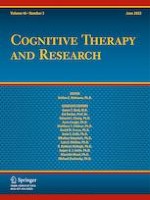13-01-2022 | Original Article
From Social Avoidance to Substance Use: Working Memory and Negative Affectivity Predict Maladaptive Regulatory Behaviors in Daily Life Across Diagnostic Groups
Gepubliceerd in: Cognitive Therapy and Research | Uitgave 3/2022
Log in om toegang te krijgenAbstract
Background
We identified common maladaptive regulatory behaviors including substance use, binge eating, and social avoidance, across healthy adults and those diagnosed with prevalent affective disorders and then tested two theoretical models (Two-dimensional Model and the Emotional Cascade Model) of cognitive-emotional processes underlying the enactment of these behaviors in daily life. These behaviors are frequent in patients and present significant challenges in treatment, thus understanding common underlying processes is essential to improving patient outcomes.
Methods
Adults with current diagnosis of depression and/or social anxiety (with common comorbidities, n = 31) or without any current/past psychiatric disease (n = 21) completed one lab session to index baseline variables, including tasks indexing cognitive control, then completed 14-days of experience sampling, reporting emotion and risk-related maladaptive regulatory behaviors five-times daily.
Results
The Two-dimensional Model, encompassing the interaction of cognitive control, indexed as working memory, and trait negative affectivity, had advantages in describing the processes underlying the enactment of maladaptive regulatory behaviors. However, a fully inclusive model, including elements of both theoretical models, was the most predictive.
Conclusion
These findings suggest that the most robust model of cognitive-emotional processes driving maladaptive regulatory behavior in daily life includes both cognitive control and trait negative affectivity. This model appears useful across diagnostic groups and findings provide preliminary support for the consideration of these behaviors as a class. These results suggest key targets for future research, including the consideration of these behaviors as a class, in treatment.
